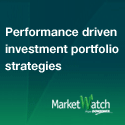Update: This post was included in the Carnival of Wealth #8 and the Curious Cat Investing and Economics Carnival #10
Interest rates that are set by a country’s central bank have a large impact on the capital markets (See: ‘How the shape of the yield curve impacts your investment portfolio‘). With interest rates (in Canada) having risen recently but still hovering near the 1% mark, knowing how your investment and retirement plans will be affected, is probably the best way to make sure you are not blindsided by the impact of fluctuating interest rates. Did you know that fixed-income investments such as bonds, that many use for capital preservation and to save for the future exhibit an inverse relationship to prevailing interest rates. Furthermore, “The potential for rising inflation and unexpected life events could mean that some fixed-income products may not be able to deliver the returns required to keep up with changing needs,” of investors, particularly those closest to retirement, says our next interviewee. Wanting to know more, we dug deeper into how one can diversify their income, minimize risk when considering fixed-income investments and much more. So read on, to find out what an actuary thinks of asset allocation and how fixed income investing can help investors in this market climate. Enjoy.
Biography: Gaétan Ruest is an actuary who works in Strategic Investment Planning at Investors Group. He directs the Symphony Asset Allocation Program and assists with solutions to complex investment planning issues.
Q: Mr. Ruest, what are the different types of fixed income investments, ranked in order of least risky to the riskiest?
A: The basic fixed income products available to Canadians, ranked by increasing volatility risk are:
1. Cash or Money Market investments
2. GICs
3. Government issued bonds (shorter terms are typically less volatile than longer terms)
4. Investment grade corporate bonds (shorter terms are typically less volatile than longer terms)
5. High Yield corporate bonds
One can also select to invest in a mutual fund which invests in some or all of the fixed income investments above.
Q: How can one reduce risk when considering fixed-income investments? Are some fixed income investments better than others in a rising interest rate environment?
A: Risks of all types can be reduced by diversifying across the different types of fixed income products. For example, a bond mutual fund would typically hold a diversified portfolio of bonds, which could include a variety of durations and yield levels.
The suitability of a fixed income investment to a particular interest rate environment really depends on the investors objectives. If the investor is seeking capital preservation and also has liquidity needs, then money market makes the most sense in any environment. If the investor is looking to generate steady income over a long period of time, long bonds and GICs can make more sense. If the investor needs growth the income level in a rising interest rate environment, then shorter bonds should respond quicker to increasing interest rates, although the income would usually begin at lower level compared to longer term bonds.
Q: Mr. Ruest, can you talk a little bit about need to balance fixed-income investments with other investments to offset rising inflation? What might some of these other investments be?
A: Real return bonds are available which will provide a higher yield during higher inflation. Having a portion of the investment portfolio invested in broad equity markets can also be a great way to retain growth potential and offer protection against inflation, as long as the investor can tolerate the ups and downs associated with equity investing. Canadian equity mutual funds can be a good choice for this exposure. An often better choice is the use of a Portfolio Fund (or Fund-of-Funds) which is partially invested in equity mutual funds and partially invested in fixed income mutual funds. The portion invested in equity will depend on the fund, with many options available for any risk tolerance.
Q: What might be the potential impact of rising interest rates on short and long term bonds? Is there an investment strategy that can be used to mitigate against rising interest rates?
A: Typically, a shorter term bond will be less impacted in a rising interest rate environment than a long term bond. But this is only true if the increase in the short term interest rates is the same as at the long term. If short term interest rates move up and long term interest rates remain stable, then the short bonds would suffer while long bonds would retain their value.
Holding a diversified portfolio of bonds (short and long) can help to mitigate the impact of rising interest. The short bonds will be quicker to respond to changing interest rates, while the longer bonds will usually provide better yield.
Q: Most people have a single source of income, how do you recommend one diversifies their income? How might taxes play into this diversification of income?
A: If an investor has some tolerance to volatility risk, then holding a portion of their retirement assets in broad equity mutual funds can provide opportunities for growth and diversification of their income. The income generate from the equity holdings will likely be in the form of dividends and capital gains, which are usually taxed on a more favourable basis that interest income. Reassessing a retirement plan is critical to ensuring a well-funded retirement. An initial plan will provide guidance on what retirement goals are achievable and how to invest to achieve those goals. As time goes by, actual returns on our investments may be different from what we anticipated, or our retirement objective may have changed, so we need to re-evaluate what our goals are and modify the retirement plan accordingly.
Q: Mr. Ruest, why is it important to do a retirement plan reassessment? What are some of the more important points that should be considered when carrying out a retirement plan reassessment?
A: Reassessing a retirement plan is critical to ensuring a well-funded retirement. An initial plan will provide guidance on what retirement goals are achievable and how to invest to achieve those goals. As time goes by, actual returns on our investments may be different from what we anticipated, or our retirement objective may have changed, so we need to re-evaluate what our goals are and modify the retirement plan accordingly.
Thank You, Mr. Ruest!
{ 4 comments }






